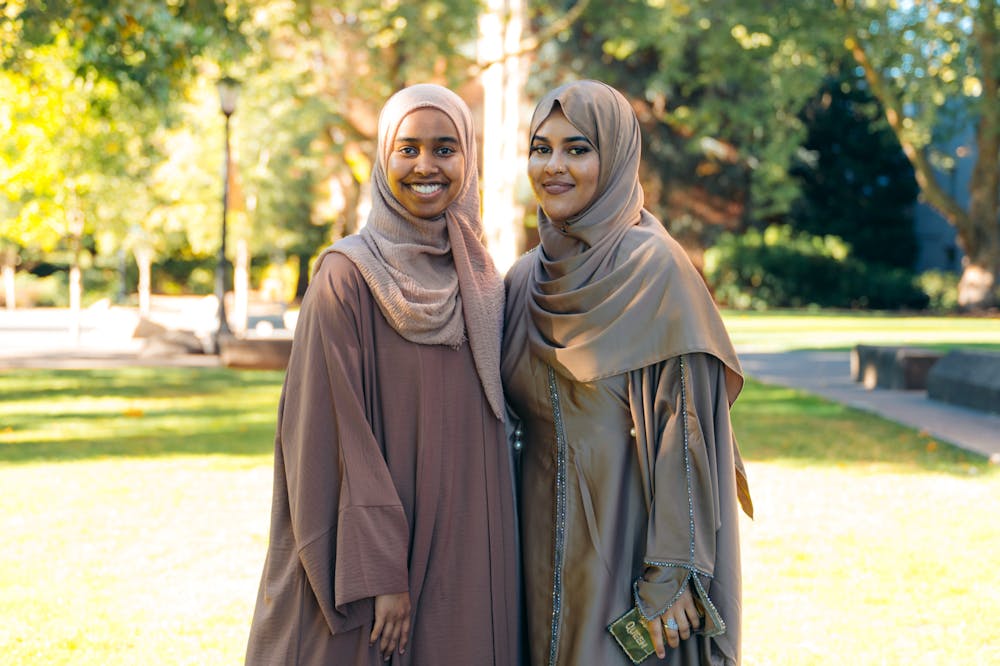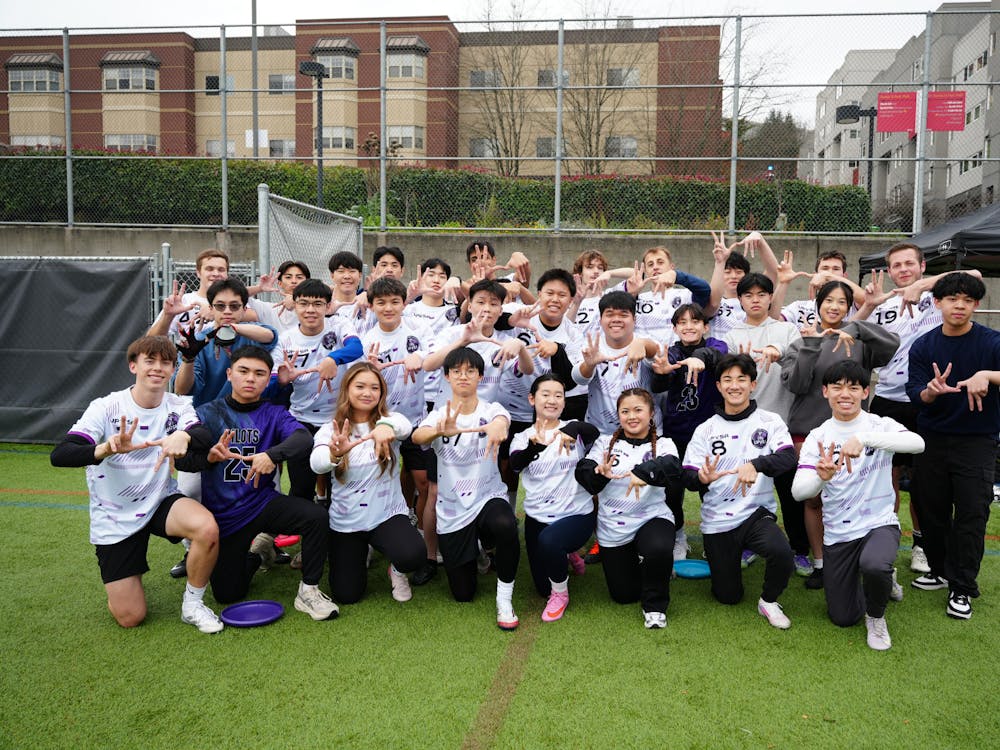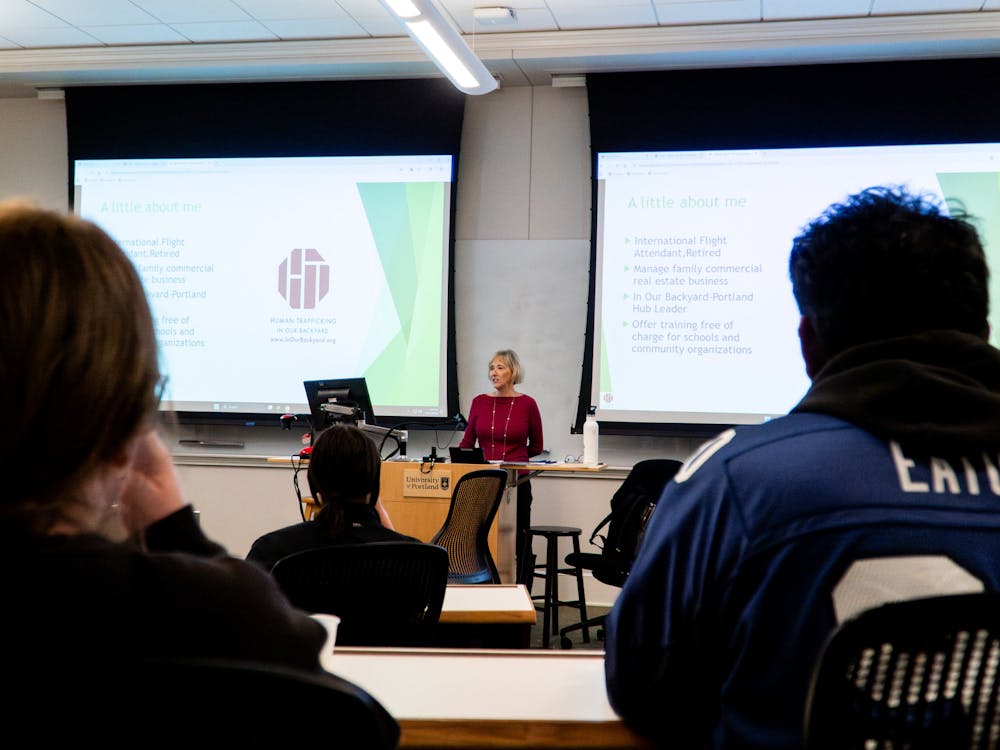From sneakers to flannels, clothing affects not only how others see us but also how we see ourselves. And, for many, Fashion is also imbued with cultural and religious significance. In particular, Muslims who practice veiling — called Hijabis, — are faced with the daunting task of representing both their faith and identity through clothing.
But faith and identity are not always mutually exclusive.
Many think of hijabs simply as fashionable headscarves or religious garments worn by Muslim women. The truth is that the word “hijab” actually translates to barrier or cover. But this definition is ultimately left in the hands of Hijabis to interpret for themselves.
Junior Manar Surur, president of the Muslim Student Association (MSA), says that many Hijabis veil for modesty reasons. She also adds that an essential aspect of veiling is in bestowing Muslim women with the power of representing their religion through their appearance.
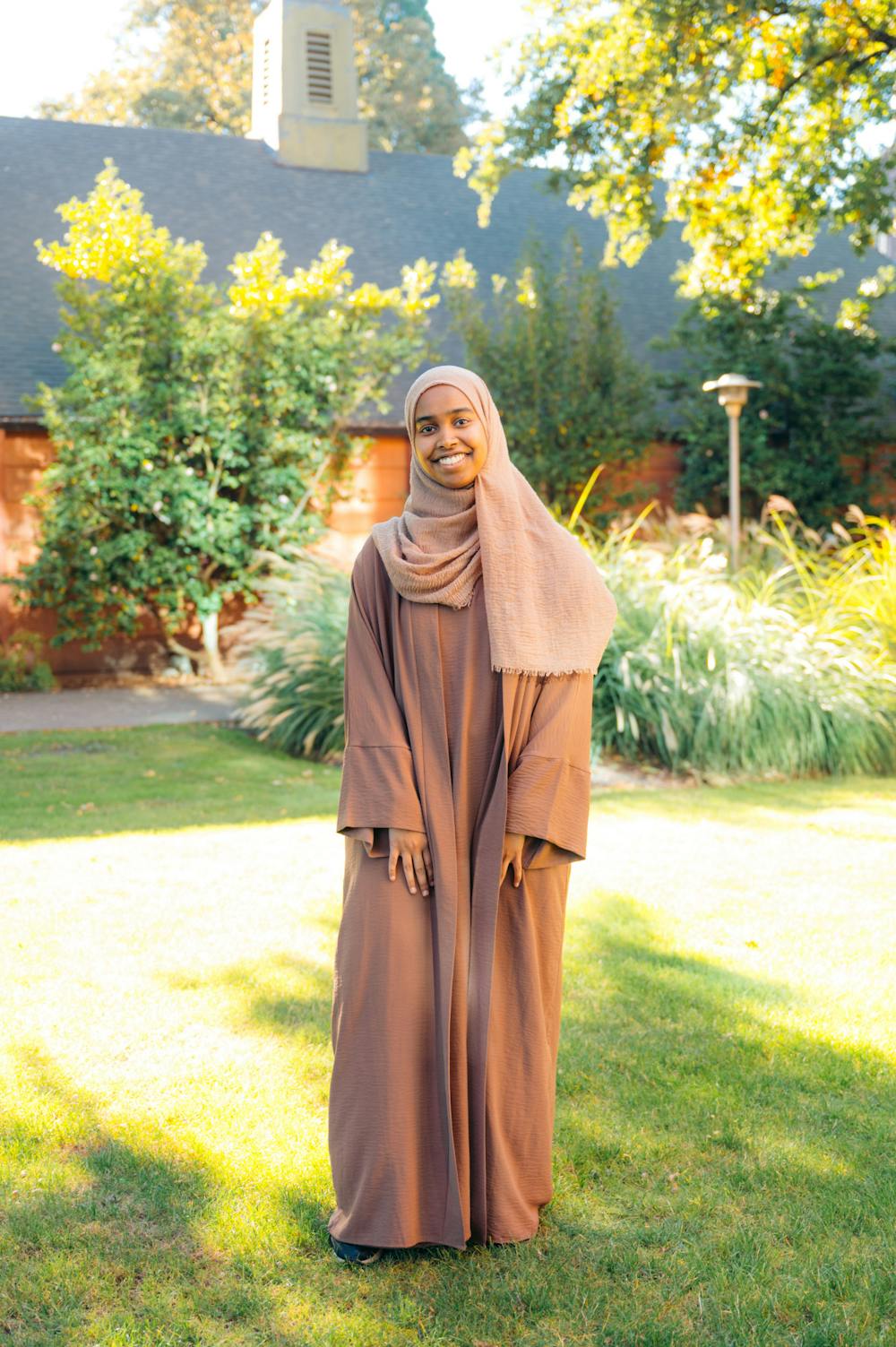
Manar Surur smiles for a photo on a sunny day. For Surur, the hijab represents her commitment to Islam.
“We’re the face of Islam,” Surur said. “For us, we wear the hijab so we represent the religion.”
While there is a major religious component to veiling, the hijab also functions as an important part of personal style for many.
Surur and sophomore MSA member Menar Emam take color into consideration when building outfits for the everyday. In addition to matching jewelry to belts or dresses with shoes, they also coordinate the hijab to other aspects of their outfits.
One such piece of clothing that's often coordinated with the hijab is the abaya, a long dress which covers most of the body, save for the head, hands and feet.
Surur finds that black serves as the most flexible color of clothing to work with. When she gets ready for the morning wearing black clothes, she’s easily able to pull out any color of hijab to go along with the outfit.
Still, at a Catholic institution where Muslim students make up a minority, the visibility of Hijabis comes with stereotypes — the biggest being that Hijabis are oppressed.
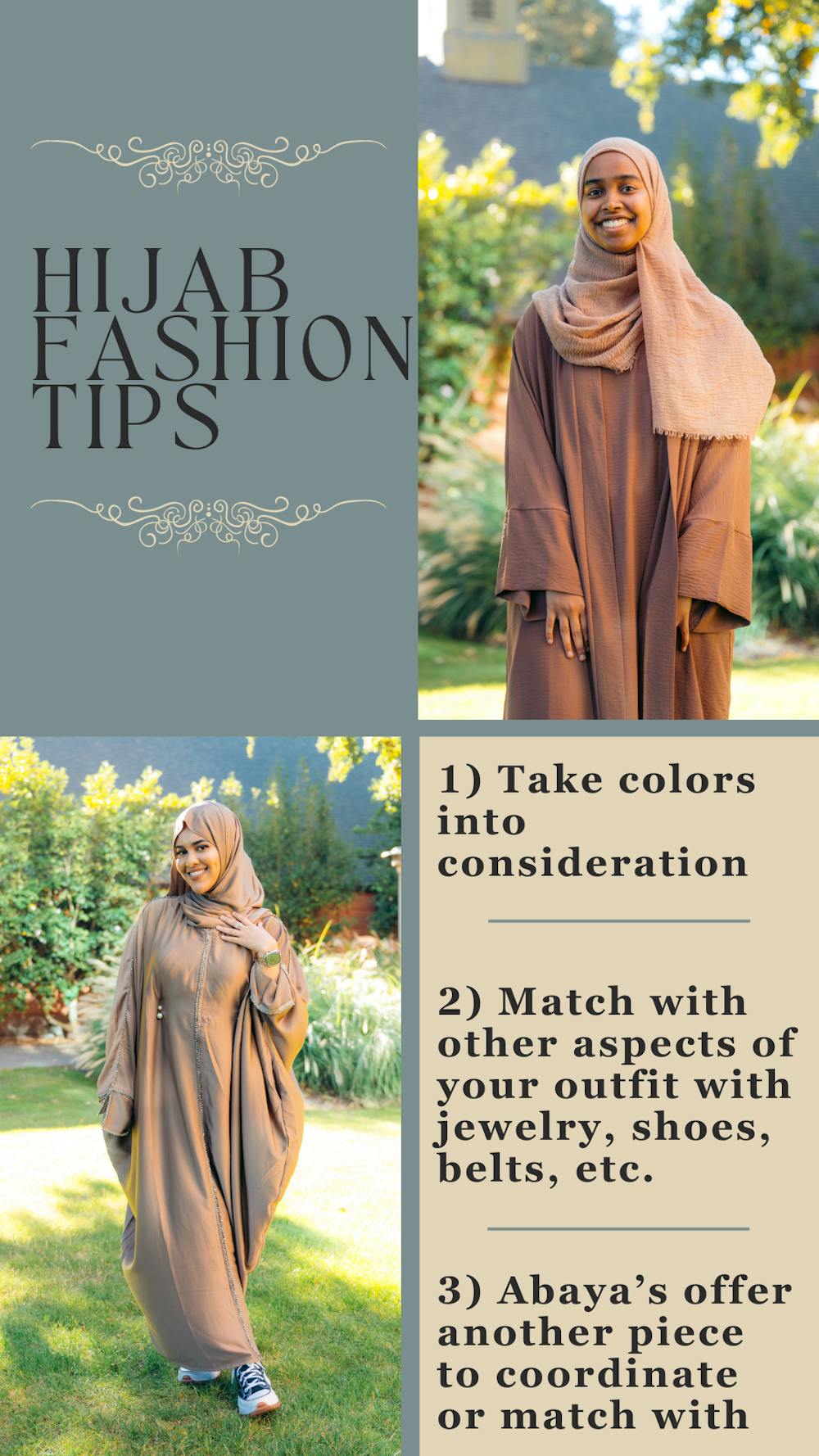
For many Hijabis, the choice to veil is just that: a choice.
Stereotypes regarding Hijabi autonomy can stem from Islamophobia — of which Hijabis are believed to be taking the brunt. While the Muslim population is expected to be the fastest growing religious group in the world, about half of American Muslims believe that it’s becoming increasingly difficult to be a Muslim in the United states.
Surur and Emam believe that MSA has helped foster a stronger community for Muslim and Hijabi students on campus. Representation on campus is important for students to see that there are Hijabis at UP and that there is space here for conversations regarding Islamophobia and Hijabi joy.
“There were no Muslims in my high school, so when I came here it was eye-opening,” Emam said. “I was never worried about how I looked to other people because I saw so many Hijabis. Even though it's a Catholic school, I felt comfortable.”
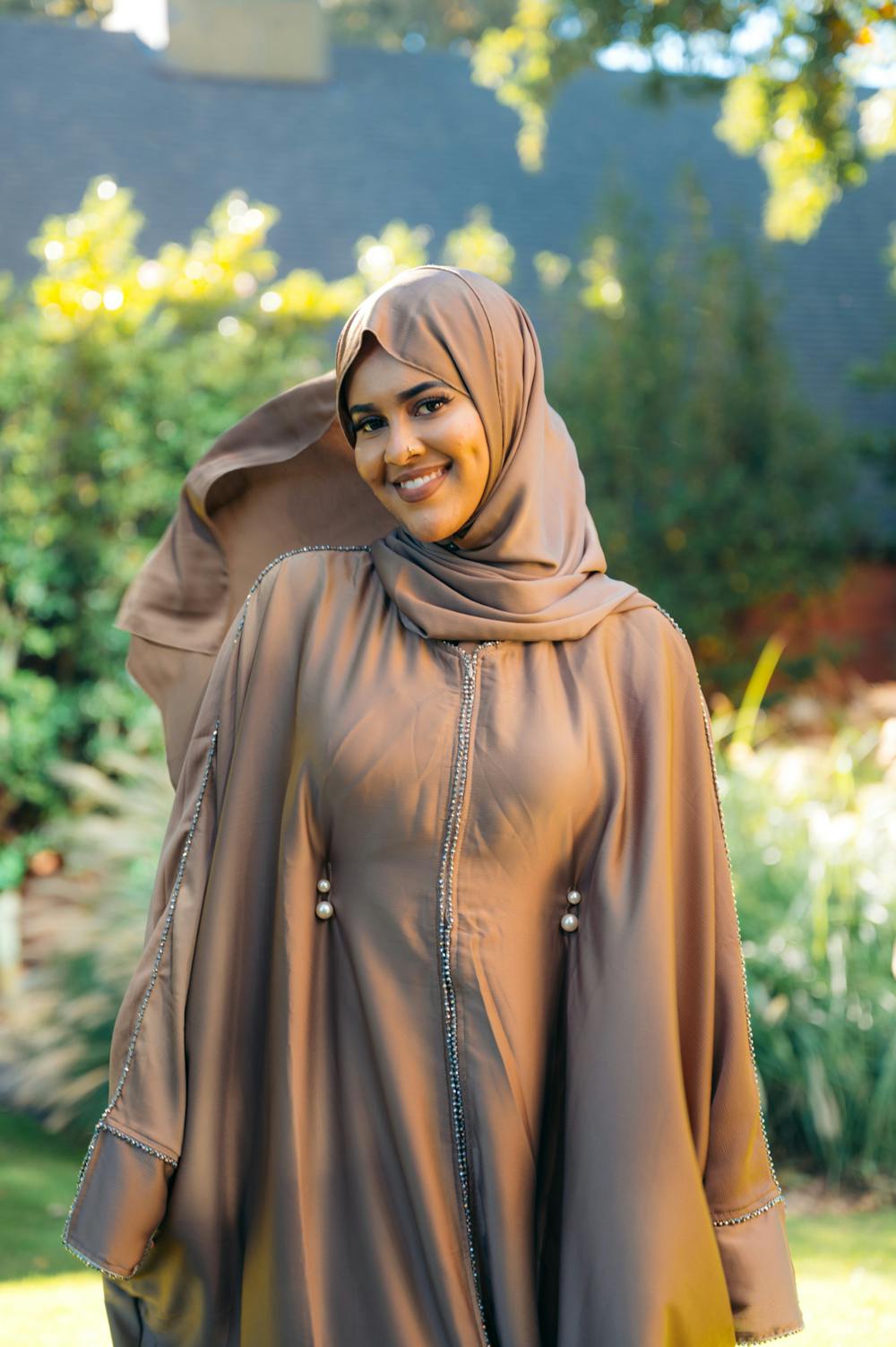
Exploring self expression during the tumultuous growing-up years is a difficult mountain for anyone to overcome. Emam discussed how during these younger years she didn’t always wear the hijab. It wasn’t until her first year at UP that she began consistently veiling.
“I started taking it more serious and doing it for me, not really caring about other people because that’s not the point of the hijab — it's so you’re closer with God, Allah,” Emam said.
Defining what an article of clothing might mean to you is an incredibly personal process. The added significance of the hijab’s religious impact on Muslims only makes that process all the more relevant to explore. Though the relevancy of the hijab is ultimately left up for Hijabis to interpret, the hijab remains a symbol of faith, identity and community for many.
“It’s also liberating in a sense because everyone else around you doesn’t wear [the hijab],” Surur said. “[The hijab] makes me proud that I’m able to represent my religion in that way.”
Camille Kuroiwa-Lewis is a reporter for The Beacon. She can be reached at kuroiwal26@up.edu.



